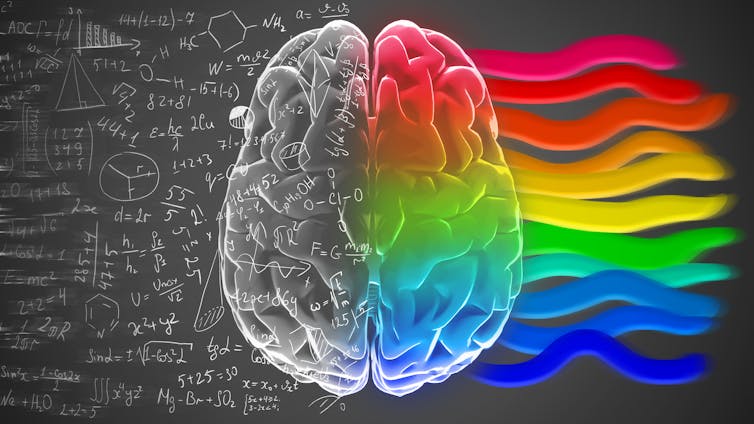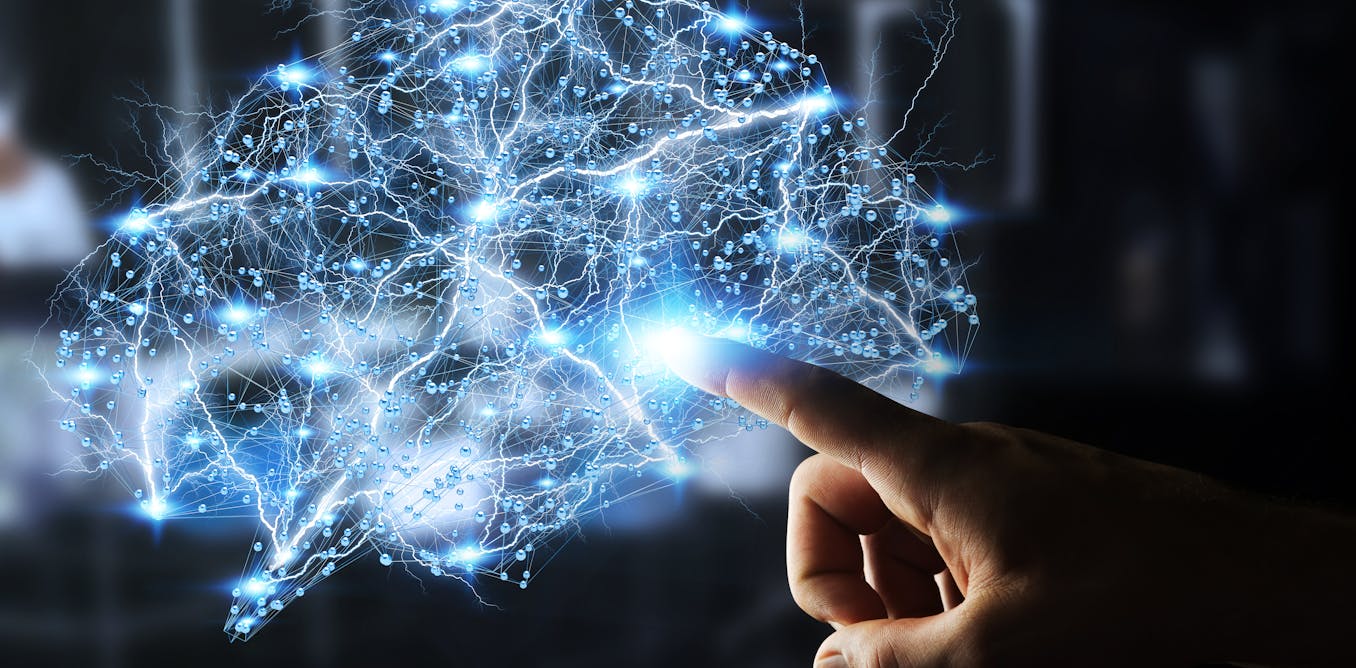Could electric brain stimulation lead to better maths skills?
A new study shows painless brain stimulation technique may improve people’s ability to learn maths skills.
yesterday • 7 min • Source
A painless, non-invasive brain stimulation technique can significantly improve how young adults learn maths, my colleagues and I found in a recent study . In a paper in PLOS Biology, we describe how this might be most helpful for those who are likely to struggle with mathematical learning because of how their brain areas involved in this skill communicate with each other.
Maths is essential for many jobs, especially in science, technology, engineering and finance. However, a 2016 OECD report suggested that a large proportion of adults in developed countries (24% to 29%) have maths skills no better than a typical seven-year-old. This lack of numeracy can contribute to lower income, poor health, reduced political participation and even diminished trust in others.
Education often widens rather than closes the gap between high and low achievers, a phenomenon known as the Matthew effect . Those who start with an advantage, such as being able to read more words when starting school, tend to pull further ahead. Stronger educational achievement has been also associated with socioeconomic status, higher motivation and greater engagement with material learned during a class.
Biological factors , such as genes, brain connectivity, and chemical signalling, have been shown in some studies to play a stronger role in learning outcomes than environmental ones. This has been well-documented in different areas, including maths, where differences in biology may explain educational achievements.
Get your news from actual experts, straight to your inbox. Sign up to our daily newsletter to receive all The Conversation UK’s latest coverage of news and research, from politics and business to the arts and sciences.
To explore this question, we recruited 72 young adults (18–30 years old) and taught them new maths calculation techniques over five days. Some received a placebo treatment. Others received transcranial random noise stimulation (tRNS), which delivers gentle electrical currents to the brain. It is painless and often imperceptible, unless you focus hard to try and sense it.
It is possible tRNS may cause long term side effects, but in previous studies my team assessed participants for cognitive side effects and found no evidence for it.

Participants who received tRNS were randomly assigned to receive it in one of two different brain areas. Some received it over the dorsolateral prefrontal cortex , a region critical for memory, attention, or when we acquire a new cognitive skill. Others had tRNS over the posterior parietal cortex , which processes maths information, mainly when the learning has been accomplished.
Before and after the training, we also scanned their brains and measured levels of key neurochemicals such as gamma-aminobutyric acid (gaba), which we showed previously , in a 2021 study, to play a role in brain plasticity and learning, including maths.
Some participants started with weaker connections between the prefrontal and parietal brain regions, a biological profile that is associated with poorer learning. The study results showed these participants made significant gains in learning when they received tRNS over the prefrontal cortex.
Stimulation helped them catch up with peers who had stronger natural connectivity. This finding shows the critical role of the prefrontal cortex in learning and could help reduce educational inequalities that are grounded in neurobiology.
How does this work? One explanation lies in a principle called stochastic resonance . This is when a weak signal becomes clearer when a small amount of random noise is added.
In the brain, tRNS may enhance learning by gently boosting the activity of underperforming neurons, helping them get closer to the point at which they become active and send signals. This is a point known as the “firing threshold”, especially in people whose brain activity is suboptimal for a task like maths learning.
It is important to note what this technique does not do. It does not make the best learners even better. That is what makes this approach promising for bridging gaps, not widening them. This form of brain stimulation helps level the playing field.
Our study focused on healthy, high-performing university students. But in similar studies on children with maths learning disabilities (2017) and with attention-deficit/hyperactivity disorder (2023) my colleagues and I found tRNS seemed to improve their learning and performance in cognitive training.
I argue our findings could open a new direction in education. The biology of the learner matters, and with advances in knowledge and technology, we can develop tools that act on the brain directly, not just work around it. This could give more people the chance to get the best benefit from education.
In time, perhaps personalised, brain-based interventions like tRNS could support learners who are being left behind not because of poor teaching or personal circumstances, but because of natural differences in how their brains work.
Of course, very often education systems aren’t operating to their full potential because of inadequate resources, social disadvantage or systemic barriers. And so any brain-based tools must go hand-in-hand with efforts to tackle these obstacles.
Roi Cohen Kadosh serves on the scientific advisory boards of Neuroelectrics Inc., and Innosphere Ltd. He is the founder and shareholder of Cognite Neurotechnology Ltd. He received funding from the Wellcome Trust, UKRI, the British Academy, IARPA, DASA, Joy Ventures, the James S McDonnell Foundation, and the European Union. He is affiliated with the University of Surrey.



